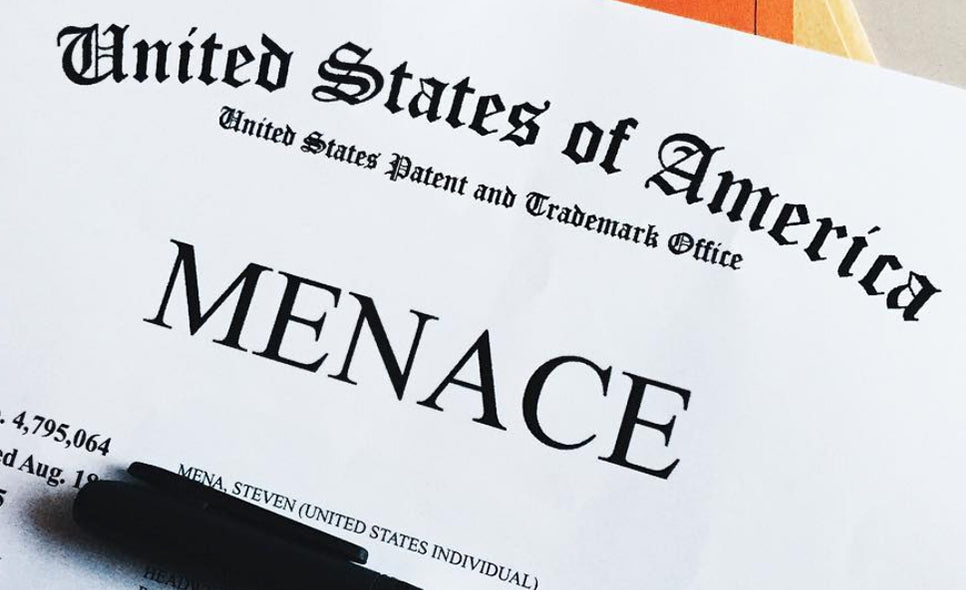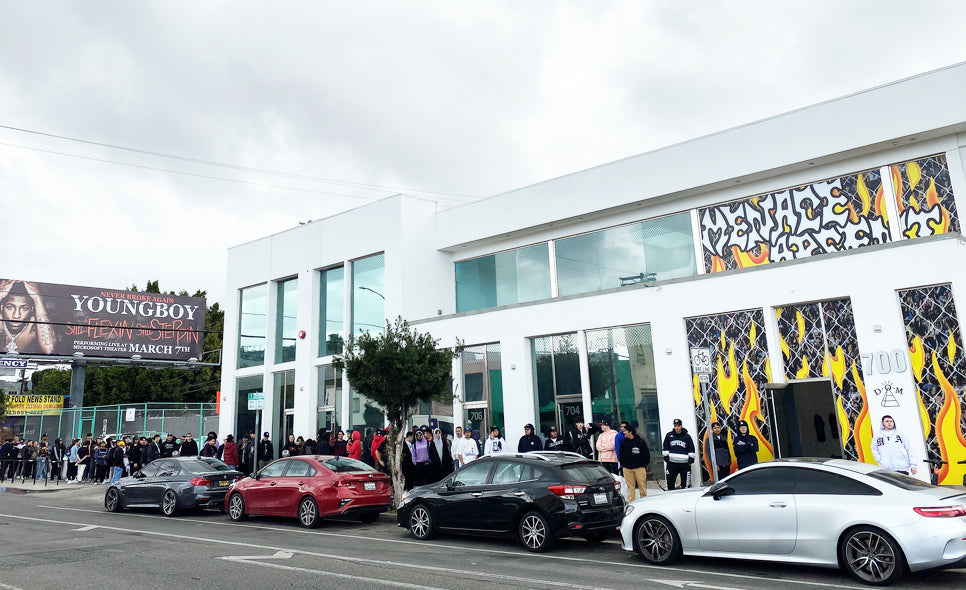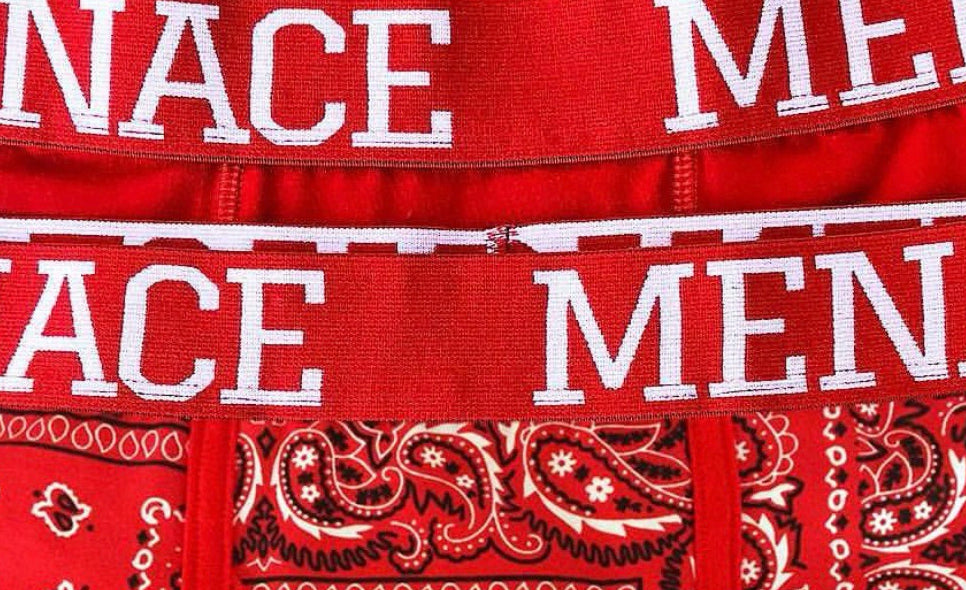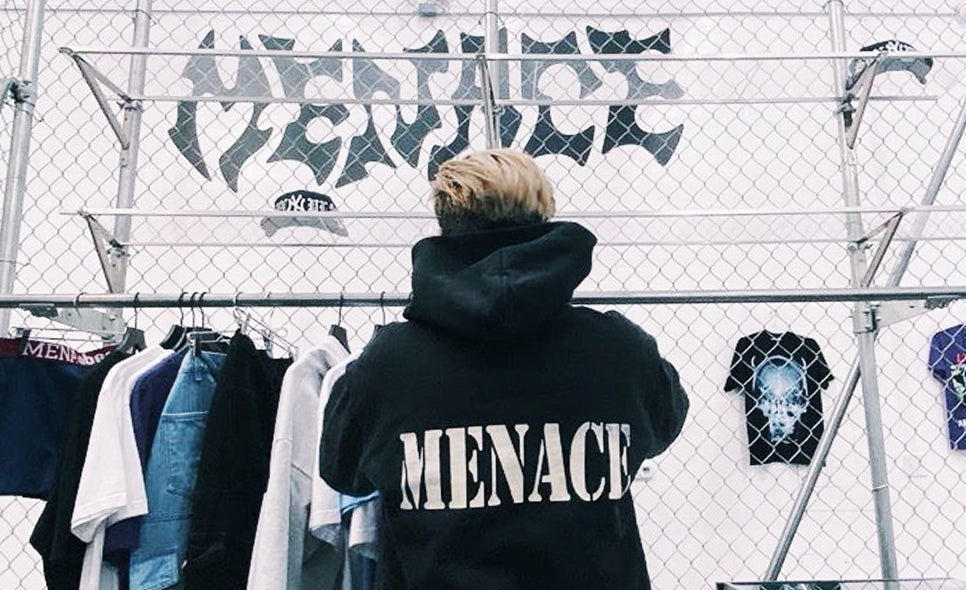MENACE was started on an evening much like the ones we are collectively experiencing in our society right now. An evening where I was just hanging out and passing the time in my house. After reading an article on launching a brand (then a book on the same subject), my interest in the idea sparked. This is why, coupled with the countless emails and messages we receive daily from people across the globe asking for advice on launching a label, we've decided to gather some of the most

valuable lessons and tips we've learned in our 7 years. With this, we'd like to give you some type of guide on starting your brand. The hope is that someone reads this and finally launches that idea they've been sitting on, whether it's in the fashion industry or elsewhere. Just like I did seven years ago after reading something similar during a period not too different from today.
1) KNOW THAT THIS IS WHAT YOU WANT TO DO
Many people think that starting a brand is easy. It's not. There will be times when you want to give up. There will be times where you have your back against the wall, wondering why you even started this in the first place. If you're ready to accept a path that demands 110% of your effort and undivided attention, prepared for sleepless nights and headaches from wanting to present new ideas but never making it passed the initial thought, then prepare for the journey. Otherwise, sit this one out. That's just the brutal truth. In my 7 years of doing this, I have seen many "brands" come and go with the wind. Every person with a bootlegged version of Photoshop and a screen printer in their neighborhood can start a brand. New ones are popping up daily and as Bobby Hundreds put it a couple of days ago on Twitter:
"Being a streetwear brand in 2020 means every time you design a T-shirt, 35 brands you've never heard of come forward and claim you stole their idea. Meanwhile, you all ripped the same reference 🤣."
2) BASIC NECESSITIES
- Computer
- Internet connection
- Photoshop / Illustrator / Gimp or a way to scan your hand-drawn images
- Website / platform to sell your product / accept payment
- Couple hundred dollars (yes that's it, MENACE was started with a total of $500)
- And the most important thing, in our opinion, which can't be purchased: Discipline
Why do you need these things? There are simply too many tools online that virtually every brand and business use nowadays. Ecommerce platforms, emails, social media, and countless other online services designed to make your life easier when running a brand are all readily accessible. Why you need the initial investment? Well, you need to start somewhere, and nobody is going to supply you for free, so that’s self-explanatory. And now, we land on “Discipline.” Like the pursuit of anything else, it requires you to put in the work plain and simple. If you are not willing to keep your head down and dive into your work, then nothing is going to get done. It seems as if this is something that goes without saying, but you would be surprised to find out how many people lack this trait when it comes to running a business. Separate yourself and make sure you’re not one of them.
3) COME UP WITH A BUSINESS PLAN
No business in history has been launched and succeeded with absolutely no research done beforehand. This is a serious endeavor you'll be taking on, and doing your proper research beforehand should be a priority. The last thing you want to do is get started, spend money, and then figure out it wasn't what you expected, so you no longer want to pursue it. Gather some knowledge about the fashion industry, how it works, and get some come-up story inspiration from other brands that are in positions you eventually want to be in. This will give you a solid idea.
Nothing beats the ease and accessibility of Youtube and Google. Watch some videos on the business idea that you have in mind and watch the results pour in. There isn't a shortage of information out there, the hard part is simply getting started with your search.

SET GOALS
How many items do you plan on selling this year? What is your yearly list of goals? Do you want to have a line wrapped around the block for your pop-up? A lot of people don't do these types of things and wonder why they don't see the results they were hoping for. Do you expect to hit a target if you're shooting in the dark? Probably not. It's important to set these goals because it gives you something to aim for. If you set your mind on selling 10 t-shirts a day, you're going to do everything in your power to make sure those items move. Your greatest asset is your mind, and if it's equipped with the belief that you're going to achieve your goal, then you are already that much closer to doing so. But if you go about your business strategy and LIFE too scared to set a goal because you don't think you'll reach it, then you' already lost. As the law of attraction goes: If you know you’re going to reach it, you’re going to reach it.
4) DEVELOP A BRAND IDENTITY AND DECIDE ON THE NAME
First things first, you need an idea for your brand, and you need a name. Pick something unique, something that is going to relay your brand's message the moment it's uttered. You don't want people confused about why your brand is named what it is. Imagine you saw the Bratz doll brand putting out heavy metal t-shirts, it just wouldn't make sense. Take this advice with a grain of salt, however, because I am a firm believer that a brand name doesn't make the brand, it's the other way around. Louis Vuitton did not become Louis Vuitton because Mr. Vuitton named it after himself. It was through years of countless work and consistency that this brand name became synonymous with excellent products and beautiful execution.
DECIDING ON A NAME & THE LEGALITIES OF IT
Once you have a shortlist of names you like, do some research to find out if the name you want is available. You can run a quick trademark search on the US Patent and Trademark website at USPTO.gov. If you find that your name is already taken, you may still be able to use it if it is not being used for your specific product range. For example, there may be a company out there that uses the name "Pure" to sell water. If you want to use the name "Pure" for your clothing brand and no one else is using that name for clothing already, then you are free to do so, in most cases.
The importance of this is simple; aside from being sued for trademark infringement, you wouldn't want to sell the same type of product as another company that bears the same name because it'll confuse with potential customers.
THE IMPORTANCE OF BRAND IDENTITY
What’s your brand's story? What is its mission statement? This is the brand's DNA, and like DNA, it should be unique to your brand. Every brand stands for something different. There are categories of brands, sure, but they each relay their message. Why? Because every brand is essentially a different person. Somebody, at one point in time, had an idea that manifested into the company that it is today. Naturally, along that journey, this person's morals and ideals seeped through the crevices and subconsciously drove that brand. Figure out what you stand for and own it. What do you want the consumer to take away after coming in contact with your brand? You can relay these messages with non-verbal cues such as logos, colors, aesthetics,

and marketing. Or with explicit communications like a brand's "About" page or the designs you release. Branding your company is a crucial task. You must always be "on-brand" with your work.
DESIGNING
Your designs should reflect your brand's image and identity. With new brands popping up every day and competition mounting, it is important to have your own unique flavor so that your work is always refreshing. There simply has to be something brought to the table that other people just don't have. It can be a feeling, a particular graphic style, the fit of your clothes, or the way you market your product. Something you do that no one else can replicate. As you read this, I'd like you to think of MENACE and pinpoint what you think it is we do so differently that drew you to our brand in the first place. Let this guide you a bit as you try to find what your specialty or niche is.
ASSOCIATION
This is usually decided when you are starting your brand but can shift as you go. You are naturally going to pursue people that reflect your brand's image and will want to start building a community that supports your brand ideals and morals. It would not make sense for you to chase after clientele from another industry. For example, if you are a skate brand, why would you pursue clientele and decision-makers from the anime space? You'd naturally gravitate towards the skater customers and work with companies within that realm because they are the most likely to understand your brand. More importantly, the people that follow those other companies will most likely resonate with your brand, and so on and so forth.
4) RUNNING YOUR BRAND
FINANCES
Once you know what you plan on doing, get an idea of how much everything is going to cost you. When you start producing and selling t-shirts or whatever your product may be, keep track of all of your expenses. Get quotes from several suppliers and compare prices to get the best deal without sacrificing quality. Add in the cost for labeling, hangtags, packaging, or whatever other finishing options you might use. Don’t forget the cost of shipping envelopes, boxes, and product storage.
These are the basic costs. As you grow, your overhead is going to grow with you. Rent, employees, insurance, research and development, marketing costs, higher production costs, human errors, supplies, equipment, transportation... you get the picture? All of this can quickly drown a company if not kept in check. It's important to pay yourself first and take care of the most important expenses that are simply necessary to keep your business running. Then, and only then, should you branch out and use those resources to grow your brand.
MARKETING & PROMOTION
Figure out how to spread the word in a way that makes it easy for those who discover your brand to spread as well. For starters, your strategy can include press releases to blogs, social networking, or traditional ads. Using guerrilla tactics and promotional strategies like this can have a tremendous impact on your business growth. Understand your brand image and align your content with this image so that the customers you are pursuing can easily resonate with your products.

The absolute easiest way to market your brand is literally at your fingertips, it's called social media. Social media is free and has been responsible for the success of more brands and businesses than you can fathom. The crazy part is, it's 100% free. Leverage this tool and use it to generate a buzz and watch your customer list grow with you. For your email marketing, developing a mailing list using a site like Mailchimp is also a great way to keep people engaged.
Maybe these traditional marketing strategies just don't align with your vision, then let us welcome you to the idea of guerrilla marketing. Guerrilla Marketing can be defined as innovative, unconventional, and low-cost marketing techniques aimed at obtaining maximum exposure for a product. Think FTP's porn lookbook on Hypebeast, Kanye West's projector screenings across the world, or wheat-pasting visuals throughout the city. It's these unconventional ways to get eyes on your brand that, if executed correctly, can have a tremendous impact on your overall rollout.
Once you have these customers, retain them. Whether that's through promotional strategies or consistently putting out products that they enjoy. The important thing is to keep them coming back and wanting more. Growing your customer list and growing with your customers is essential and will elevate your brand to new levels.
CUSTOMER SERVICE & BACK-END FULFILLMENT
For starters, a basic protocol for customer service is necessary to sustain a brand. People have to be able to contact you and get information regarding an order. At the end of the day, this is people's money you are handling, and you have a responsibility to fulfill their orders promptly and ensure delivery of their products. Granted, it doesn't always happen but prioritizing this essential for the growth of your business. Nobody wants to purchase from somebody who doesn't get them their items on purpose, that's stealing.
Make sure to have the right materials and processes in place to fulfill your orders. These include shipping mailers, access to a printer for labels, and a backend fulfillment program for your e-commerce platform (Shippo or Shipstation are great places to start). A standard shipping service used is USPS. It is the most common because it is the cheapest but not the most reliable. A step up from this service is FedEx or UPS, which will increase your upfront costs, but through economies of scale, it can save you money in the long run once you no longer have to deal with lost packages or returns.
GROWING YOUR BRAND, ORGANICALLY
Don’t be scared to reach out and put your brand out there, everybody starts somewhere and there is no right way. What we mean by this is don't be afraid to reach out to decision-makers, coordinators, companies, or just the general people in your space. Connecting with your peers is a good way to get an understanding of trends, how the market will react to a certain product launch, the general feeling surrounding your industry, and if all that isn't good enough, it is still a good way to connect with people who have a mutual interest. At the very least you'll come out the other end with some new friends.

5) DON'T QUIT
If you're not seeing immediate success, that's okay because most people don't. MENACE didn't see actual progress and real profit until maybe the 4th year in. A sure-fire way to guarantee your brand fails is consistently doubting "you" or negatively comparing "you" to others in your space. Just focus on what you have going on and try to figure out ways to improve. Reanalyze your business plan, promotional efforts, and branding strategy. Consider how you compare to the competition and emphasize your competitive edge or simply to get inspired and see where you want to be in the future. The important thing is growth. When you’re just getting started, you’re still learning, so keep at it.
Whatever you do, don’t quit and finish what you started.


